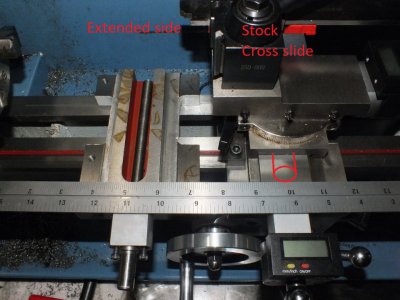- Joined
- Mar 5, 2022
- Messages
- 21
Looking at lathes and curious if there is any rule of thumb for lathe specs?
Can a 7x16 lathe turn a chunk of aluminum theoretically 7x16 or slightly under? 8.7x23?
Many times they advertise chuck size in description.
What diameter material can actually be chucked up? Are all jaws reversible so a 4 inch chuck can hold something about 4 inches in diameter?
Can a 7x16 lathe turn a chunk of aluminum theoretically 7x16 or slightly under? 8.7x23?
Many times they advertise chuck size in description.
What diameter material can actually be chucked up? Are all jaws reversible so a 4 inch chuck can hold something about 4 inches in diameter?


